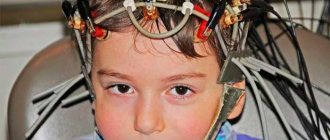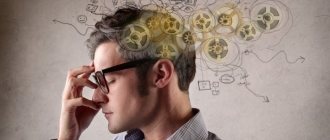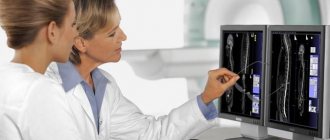Goosebumps run across the skin - a specific sensation familiar to many, sometimes called “goose bumps”. It appears in different situations, accompanies pleasant moments, a feeling of cold, emotional states, and excitement. Normally, this is a momentary phenomenon that soon passes, leaving no traces behind.
Doctors call these goosebumps benign paresthesia. There is also malignant, when modification of the epidermis is associated with the occurrence of dangerous pathological processes in the body.
A specific tingling and pins and needles sensation appears on different parts of the body: head, limbs, face. Their appearance is associated with irritation of nerve endings when inconsistent signals arrive from the brain. They overlap each other, the nerve does not know how to react to this, as a result of which goosebumps, a slight feeling of burning and numbness, and sometimes pain occur.
Temporary or benign paresthesia is normal for the body, so no intervention is required. If this phenomenon becomes chronic, you should consult a specialist.
Benign paresthesia
In an absolutely healthy person, goosebumps can run through the body from touch, emotions, experiences. This happens due to the rudimentary pilomotor reflex. It is also inherent in a significant part of mammals and even has important practical significance.
In animals, for example, their fur stands on end, which indicates sexual arousal or aggression. The hair on human skin is not so expressive, so we only notice numbness of the epidermis, pimples, and slight tingling. The following factors can provoke such symptoms:
- sudden change in temperature;
- severe fear;
- sexual arousal;
- reaction to pleasant music;
- words that give you goosebumps;
- moral and physical satisfaction;
- irritation;
- poor circulation in the lower extremities due to prolonged stay in an uncomfortable position.
Benign paresthesia can be recognized by the manifestations characteristic of this condition. Goosebumps on the face, limbs and other parts of the body pass quickly, while the person is not bothered by dizziness, headache and other alarming symptoms.
What can cause goosebumps
Cold
The most common trigger for the pilomotor reflex is chills. A sharp drop in temperature leads to the release of adrenaline, which triggers the piloerection reaction. We have inherited this reflex since ancient times. Previously, it helped keep a person warm by “fluffing” the hair on the body, but now, rather, it tells him that it’s time to get a sweater.
Fear
Non-physical effects can also cause goosebumps. It has long been known that emotions can provoke various physical reactions: sweating, crying, laughter.
Fear triggers our fight or flight response. When faced with a possible threat, the amygdala in the brain “hits the shoulder” of the hypothalamus, it releases adrenaline, and this hormone makes us bristle and urgently do something to save our lives. This is also why people sometimes experience goosebumps during panic attacks.
Read on topic:8 ways to deal with an oncoming panic attack
Causes of malignant paresthesia
If a sensation of goosebumps appears on the scalp, it does not go away for a long time, symptoms such as pain in the skin, headache, dizziness, redness of the skin are added, it makes sense to talk about malignant paresthesia.
RECOMMEND: Causes of peeling skin on the eyelids
There are many reasons for its development, so to establish the factors that provoke the occurrence of the pathological process, a comprehensive examination and consultation with specialists from various branches of medicine will be required.
- Hypovitaminosis. Vitamin B1 is necessary for the normal functioning of the nervous system. If it does not enter the body in sufficient quantities, goosebumps often appear on the skin, which is accompanied by irritability and heart pain.
- Lack of magnesium. With a deficiency of this microelement, a person feels severe weakness and fatigue, he has goosebumps on his head, back, legs, cramps and indigestion may appear.
- Arrhythmia is a disease in which the rhythm of the heart is disrupted. In addition to goosebumps, in this case there is a chill without a change in body temperature.
- Stroke. The primary symptom of this dangerous disease is goosebumps, which signal the death of parts of the brain.
- Guillain-Barre syndrome. The pathological process develops after a viral illness (herpes, influenza). In this case, the goosebumps spread only to the lower limbs, after which the legs go numb and lose mobility.
- Multiple sclerosis is a dangerous pathology in which immune cells attack their own nerve cells. Most often, goosebumps run across the face and aching pain appears.
Similar symptoms may also occur after taking medications from certain pharmacokinetic groups. Thus, patients who take medications for epilepsy, Cycloserine, Ofloxacin and others often get goosebumps.
Features of the condition and its causes
Patients usually call “goosebumps” the feeling that occurs when “goose bumps” appear—small pimples at the base of small hairs on the skin. The sensation usually appears when a person is cold or if he is afraid of something, experiences delight or sexual arousal. Also, people often use the expression “the hair stood on end.”
The goosebumps themselves can cause:
- muscle spasm of the limbs;
- slight shaking;
- tension (both physical and psychological);
- nervousness or irritability;
- Constant feeling of restlessness and anxiety.
This condition is especially frightening for people who cannot understand what is happening to them.
Overly sensitive individuals may even begin to suspect that they have a dangerous disease, which will only worsen the situation. The occurrence of a symptom can be due to many reasons. As a rule, the following ailments can lead to goosebumps: low levels of calcium or magnesium, lack of vitamin B1, multiple sclerosis, spinal pathologies, migraines, varicose veins, lesions of the parietal lobe of the brain, etc. Another common cause of goosebumps is often vegetative-vascular dystonia.
How is the symptom related to VSD?
It is known that the development of VSD is caused by mental instability of the individual, which manifests itself in excessive exposure to fear, depression and stress. Such patients often suffer from various undesirable symptoms, one of which is goosebumps. In this case, the symptom is accompanied by the following manifestations:
- increased heart rate;
- fever or chills;
- rapid heartbeat;
- high blood pressure;
- difficulty breathing, shortness of breath;
- profuse sweating;
- nausea, vomiting;
- noise, humming or ringing in the ears;
- trembling in the limbs;
- general weakness, dizziness;
- frequent urination or persistent diarrhea.
People who suffer from phobic disorders and are under intense psychological stress may regularly experience a sensation of chills crawling down their spine.
They are able to feel fear not only in situations of direct contact with the object of fear, but even simply when thinking about their fears. A “threat” for them can be associated with anything: from people around them who may suddenly talk about a painful topic, to films and television shows that are somehow related to “danger.” Anxiety and worry haunt such individuals constantly, as a result of which patients develop “goose bumps”.
Paresthesia in hypoparathyroidism
To determine why goosebumps are running on your skin, you should conduct a comprehensive examination. Malignant paresthesia is dangerous for the health and life of the patient, as it can signal the occurrence of complex pathological changes.
Patients diagnosed with hypoparathyroidism almost always experience goosebumps on the scalp, body and face. This is a disease in which the concentration of calcium is greatly reduced due to impaired functioning of the parathyroid glands.
In addition to paresthesia, the following symptoms may also occur:
- severe carious damage to dental tissue;
- nails become dull, peel and grow poorly;
- hair begins to fall out profusely;
- the skin is peeling;
- the muscles of the limbs contract involuntarily;
- abdominal pain appears, digestion is disturbed;
- hearing and vision deteriorate.
WE RECOMMEND: Cuperosis on the face - causes and treatment
Hypocalcemia, and even with hypoparathyroidism, is a very dangerous condition that requires immediate medical intervention. In the absence of an adequate response, the consequences can be the most unpredictable, including disruption of the muscles of the respiratory system and respiratory arrest. That's why you can't ignore goosebumps.
The doctor explained why goosebumps appear and run all over the body
Photo: depositphotos/HayDmitriy
Immunologist Anna Shulyaeva explained why goosebumps appear and run on the body, reports the Arguments and Facts website.
She noted that in most cases this phenomenon is completely harmless. Most often, goosebumps appear as a result of a reflex to danger. This effect is a human atavism, and animals protect themselves in this way.
“Most often, such a reaction is observed in response to some external stimuli, and goosebumps appear on their own, unexpectedly and not always on time,” Shulyaeva noted.
She added that the cause of goosebumps is most often an emotional outburst or hypothermia. In a normal reaction, the effect wears off without any consequences after a few seconds. At the same time, goosebumps may be evidence of some kind of pathology.
Shulyaeva noted that if they appear for no apparent reason, then this may be a reaction to neurological disruptions in the body. In this way, the body tries to tell about damage to the nerves or nerve endings.
“Also among the reasons may be vitamin deficiencies, the appearance of some neoplasms that compress the nerves. This situation can occur spontaneously and against the background of problems with blood vessels. In this case, it is recommended to visit a phlebologist for a detailed study of the situation, diagnosis and treatment,” Shulyaeva said.
She added that pain or numbness in the limbs that occurs after the appearance of goosebumps may also be a reason to see a doctor. In addition, the effect of running, as if goosebumps ran all over the skin, is considered a deviation from the norm. This may be a consequence of a lack of vitamins or insufficient oxygen supply to the tissues.
In addition, among the reasons it is worth noting a lack of collagen. In such cases, the skin begins to peel off and irritation begins to appear on it. In this case, you need to adjust your diet, making it more fortified, which a specialist can help with.
The chills and tremor of the limbs can also be masked by the chills effect. This may indicate problems with the thyroid gland, and therefore you need to consult an endocrinologist. The appearance of goosebumps on the left side may indicate problems with the heart and blood vessels, especially if they last more than 5 minutes and are accompanied by trembling.
If, in addition to the appearance of goosebumps, chronic fatigue, heaviness, swelling or numbness in the legs appear, then it is necessary to undergo a full medical examination. It is especially worth paying attention to the performance of blood vessels and the presence of plaques in them.
Earlier, dermatologist Svetlana Zhaboeva gave recommendations on skin care in case of sunburn. She noted that the first step is to wash your face to eliminate sweat and dirt. Then you need to apply a soothing cream to the skin.
Diagnosis and treatment
In order to ensure proper treatment of goosebumps on the head, it is necessary to determine the causes of their appearance and the accompanying symptoms (for example, itching of the scalp). Diagnosis requires the use of a variety of methods. First you need to consult a trichologist and dermatologist.
After collecting anamnesis and examining the patient, specialists can make a preliminary diagnosis. To confirm it, it is recommended to use instrumental and laboratory examination methods. Patients are recommended to undergo a biochemical blood test to determine the level of:
The patient also undergoes a general blood and urine test. Patients are recommended to undergo radiography of the cervical spine, neuromyography, and brain tomography. In some cases, rheoencephalography, electrocardiography and ultrasound are prescribed.
Thanks to diagnostic measures, it is possible to develop an effective treatment regimen. When a symptom appears, it is recommended to use:
- vasodilators. With the help of these drugs, blood circulation in the brain improves;
- antihypoxants;
- Angioprotectors. With the help of medications, blood vessels are strengthened and their tone is maintained;
- Statins. The use of drugs is recommended to slow down atherosclerotic processes; vitamins. With their help, tissue trophism and the passage of nerve impulses are improved. It is recommended to take magnesium, potassium, thiamine, and B vitamins.
If the cause of the symptom is diabetic neuropathy, then hypoglycemic medications are necessary. At the same time, diet therapy is used, which consists of excluding foods with a high hypoglycemic index from the diet. There should be short breaks between meals.
A head massage will relieve stress and tension. It can be easily performed by any patient independently.
For multiple sclerosis, it is recommended to treat with B vitamins. Patients are also recommended to undergo immunotherapy. Thanks to these drugs, the excessive activity of auto-aggressive particles that damage nerve tissue is blocked.
Significance in diagnosis
Symptoms, accompanied by a feeling of goosebumps running in the head, have important diagnostic significance. Such manifestations mean that a pathological process is occurring in the body, which may be a consequence of the following factors:
- disruption of the innervation of the neck, head and brain;
- problems with blood circulation;
- hormonal disorders;
- consequences of mechanical damage.
Paresthesia is also of differential importance in the diagnosis of mental disorders.
The benefit of goosebumps is the possibility of early diagnosis. Making a diagnosis at an early stage allows you to avoid the development of acute life-threatening conditions (vascular obliteration, stroke). Since paresthetic effects appear in the first stages of the pathological process, timely treatment helps prevent chronic disease.
Do something useful, it won't take much time
source











